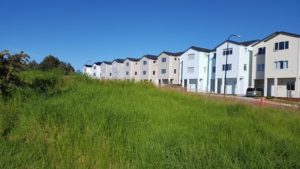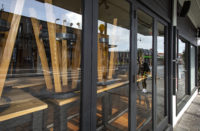
New Zealand’s building boom is set to continue, making it the longest in the country’s history.
Building and Construction Industry Training Organisation chief executive Warwick Quinn says the number of new residential building consents issued in 2017 is expected to exceed those issued in 2016, resulting in six consecutive years where consents have continued to rise, beating the previous record.
While the numbers of consents issued in December 2017 are not yet available, the total number for the year issued up to the end of November 2017 (28,916) is already close to 2016’s total of 30,063, according to figures recently released by Statistics New Zealand.
“While December is often a quieter month we are still expecting consents in 2017 to be about 31,000, surpassing 2016’s total. This will mean the longest ‘bull run’ in construction activity since records were first collected in the 1960s. The previous longest run was for five years from 1969 to 1973 and for four years between 2001 and 2004.”
Quinn says the construction industry is well known for its volatility. Both of the other bull runs were followed by even lengthier recessions. However, this time it appears growth is set to continue for the foreseeable future and should be further boosted by Labour’s KiwiBuild programme.
Since the bottom of the market in 2011, there has been year-on-year growth and Quinn anticipates the number of residential building consents issued by the end of 2017 to be up about 4 per cent to 5 per cent on 2016.
Quinn says Auckland has enjoyed seven years of continuous growth with five years for Northland, Waikato, Bay of Plenty, Taranaki and Otago, all of which are record runs.
He predicts nearly all regions will show growth compared with 2016. Canterbury will be the exception as the rebuild continues to taper off. Quinn also says he expects Auckland will end at around 11,000 new consents – up about 10 per cent on 2016, but still well below the estimated 14,000 needed per annum to meet demand.
As at the end of November 2017, Canterbury, Taranaki, Tasman and Southland were below the equivalent eleven-month period in 2016. However, Quinn says he would not be surprised if all, but Canterbury recovered somewhat in December. Waikato remained the same, and the rest of the regions recorded rises. Overall New Zealand was up 3.8 per cent.
Quinn says this level of consents is why the demand for skills is very high across all trades and regions. “While a lot of media attention has been focused on Auckland there is significant demand throughout the country. More than 65,000 construction workers are needed over the next five years and a little under half of these need to be trade qualified.”
Quinn says it is critical that everyone understands the Government’s fees free policy applies to industry training and is not just for universities and polytechnics. What’s more, apprentices that are eligible will get the first two years fees free, which pays for half of a four-year apprenticeship. “There has never been a better time to consider a career in the trades,” says Quinn.



